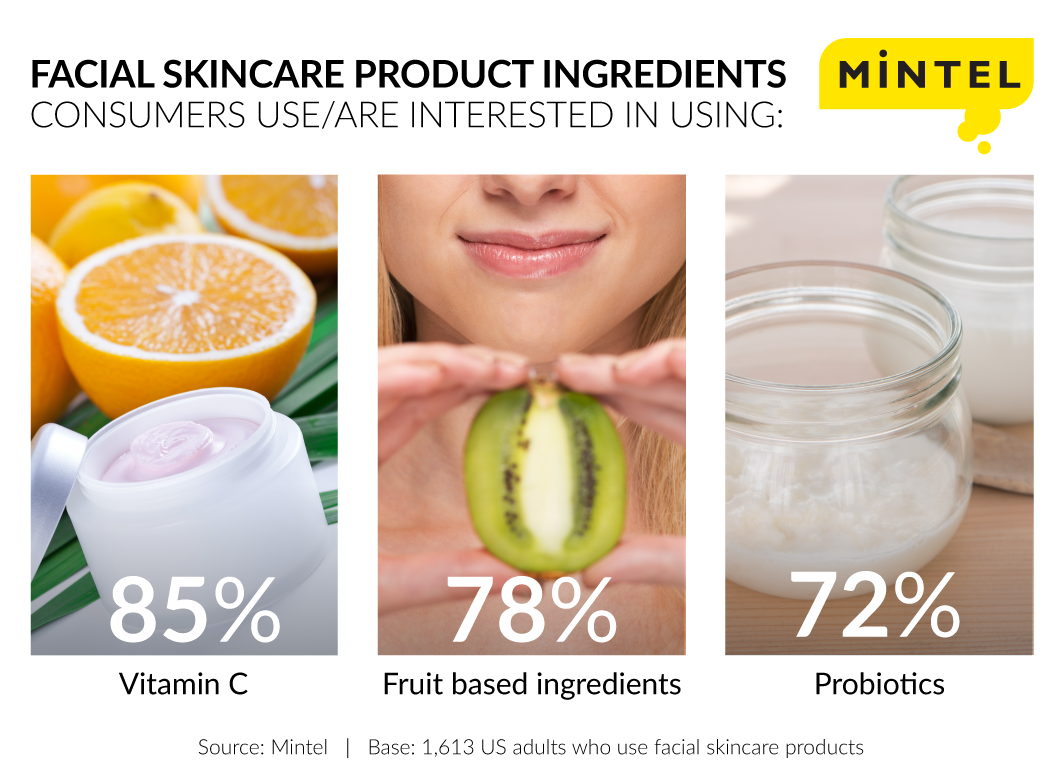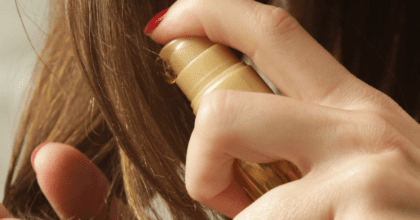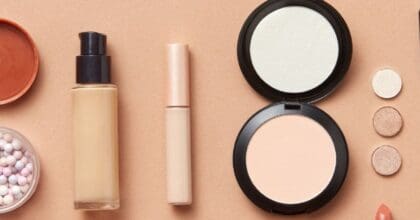Interest in natural formulations drives struggling US facial skincare and anti-aging market
After years of slow but steady growth, the US facial skincare and anti-aging market experienced declining sales in 2015; however, new research from Mintel reveals that interest in natural formulations presents an opportunity for the saturated market, as trusted and easily recognizable ingredients alleviate concerns about chemicals, pollution and unfamiliar ingredients.
Natural formulations have become central to the facial skincare and anti-aging market, as major brands and niche brands alike now feature natural claims on product packaging. What’s more, consumers are interested in milder, more natural formulations and those that shield against pollution as one in seven (14 percent) agree that pollution impacts the appearance of their skin.
Many consumers agree lifestyle factors such as hydration and diet impact skin’s appearance more than using skincare products
Consumers also view lifestyle as an important factor in their skin’s appearance, with many agreeing that factors such as hydration (44 percent) and diet (36 percent) impact skin’s appearance more than using skincare products (26 percent). Another 38 percent agree that stress impacts the appearance of their skin, and as such, 30 percent of consumers look for anti-aging products featuring anti-stress claims.
As highlighted by Mintel’s Global Beauty and Personal Care Trend Gastronomia, interest in natural beauty and personal care ingredients is on the rise, and natural product trends paired with the strong association between diet and skin is driving the emergence of food-based and probiotic facial skincare. Indeed, consumers are most likely to be using or interested in using products with vitamin C (85 percent), fruit based ingredients (78 percent), oatmeal (78 percent) and honey (76 percent). Further supporting this trend, 72 percent of consumers use or are interested in using products featuring probiotics.
“Consumers are embracing healthy, holistic living, and our research shows that these lifestyle changes are driving the facial skincare and anti-aging market. In such a saturated marketplace, products featuring natural formulations are standing out to consumers who trust identifiable and natural ingredients,” said Shannon Romanowski, Category Manager, Health, Household, Beauty and Personal Care at Mintel. “The link between diet and skin is evident, and as consumers increasingly associate their lifestyle with their skin’s appearance, product formulations with added food-based ingredients and vitamins stand out among the competition.”
Mintel research reveals that saturation in the facial skincare and anti-aging market is occurring as benefits in traditional moisturizers, anti-aging products and specialized products blur category segments. Products such as daily use moisturizers now integrate anti-aging benefits, leading to a decline in sales of strictly defined anti-aging treatments. In fact, while anti-aging is still the largest segment in the category, it saw sales decrease 6.3 percent 2014-15. Further, 21 percent of consumers do not use and are not interested in using anti-aging products compared to 18 percent of consumers who use them.
While lip balm has been one of the most dynamic and fastest growing segments of the category, with sales increasing 55 percent from 2010-14, the segment faltered in 2015 as sales declined 3 percent due, in part, to competition from cosmetics (eg tints, gloss, lipstick) with moisturizing and protective qualities undercutting sales. Reported usage of lip balm took a slight dip from 2014-15, dropping from 52 percent to 49 percent of consumers using these products.
Meanwhile, facial cleansers continue to gain market share from the anti-aging segment. The cleanser segment is currently the fastest growing in the market, increasing sales 4.6 percent 2014-15 to reach $1.8 billion. Anti-aging products are also losing market share to moisturizers, which experienced an uptick of sales of 2.9 percent 2014-15, amassing $765 million.
“After burgeoning for the five years leading up to 2015, the lip balm segment stalled as saturation set in and competition from cosmetics with moisturizing and protective qualities and the trend toward bold lip color undercut the segment’s sales. At the same time, sales of facial cleansers and moisturizers are on the rise, driven by younger consumers who have greater facial cleansing needs brought on by active lifestyles, specific skin concerns and elevated interest in new formulations,” continued Romanowski.
As the facial cleanser segment increases market share, no-rinse cleansers are poised for growth. Mintel research reveals that while just 8 percent of adults currently use cleansing waters (also referred to as micellar waters), this increases to 14 percent of consumers age 18-34. And consumers view cleansing waters favorably, with many agreeing that they are refreshing (45 percent), safe for sensitive skin (43 percent) and more gentle (39 percent) than rinse-off cleansers. However, there are barriers to usage: nearly half (46 percent) of consumers perceive these products as more expensive than rinse-off cleansers and one quarter (28 percent) agree they have confusing usage instructions.
The overall facial skincare and anti-aging market experienced a 1.4 percent decrease in sales in 2015, falling to $6.6 billion, with limited engagement from the aging Baby Boomer population impacting the entire category. Consumers age 55+ are the least likely to report usage of nearly every facial skincare product surveyed by Mintel*, with one third (32 percent) not using any of the surveyed products (vs 19 percent overall).
“While the facial skincare category has experienced tepid sales over the years, in 2015 we saw declines for the first time in five years. Moving forward, the category’s success will rely on younger consumers and the growing facial cleanser segment, with an emphasis on natural, recognizable ingredients and innovation like ‘waterless cleansing.’ To broaden the appeal of these products, brands should be proactive in addressing concerns surrounding cost and usage instructions,” concluded Romanowski.
*Mintel surveyed usage of the following facial skincare products: facial cleansers, facial wipes, facial scrubs, facial toners/astringents, liquid make-up removers, cleansing waters, lip balm, facial moisturizers, eye cream/gels, acne treatment products, anti-aging treatments, facial masks/peels, facial serums, BB or CC creams, and facial oils.
Press copies of the Facial Skincare and Anti-Aging US 2016 report and interviews with Shannon Romanowski, Category Manager, Health, Household, Beauty and Personal Care, are available on request from the press office.
For the latest in consumer and industry news, top trends and market perspectives, stay tuned to Mintel News featuring commentary from Mintel’s team of global category analysts.
-
Mintel StoreGet smart fast with our exclusive market research reports, delivering the latest data, innovation, trends and strategic recommendations....View reports
-
Mintel LeapMintel Leap is a revolutionary new AI-powered platform that will transform your research process....Book a demo








































